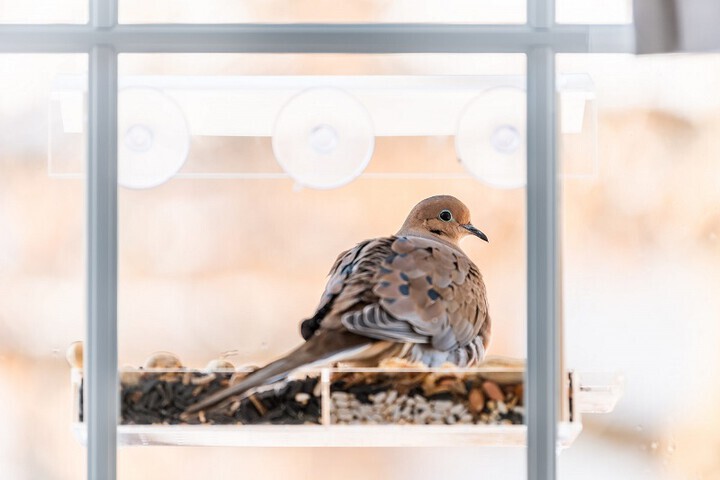Here's what you can do to stop them from hitting your home, according to an expert from the National Audubon Society.

Nothing is more startling than when a wild bird flies into the window. After all, it would seem odd that birds—having exceptional navigation systems and knowing where to go when they fly south every winter—would collide headfirst into a pane of glass. So, why is it so common for birds to fly into windows and how can we help prevent it? "Birds fly into windows because they don't perceive them as hard barriers," explains John Rowden, senior director of bird-friendly communities at the National Audubon Society. "They may see mirror-like reflections in the glass that look like space or habitat that is appropriate to fly towards or they don't see the glass at all if it's transparent and there's something on the other side they want to fly toward."
But flying into a window can be fatal if the bird is on a migration path or trying to escape a predator. Birds tend to fly at faster speeds in those situations and could become confused when they see what appears to be an empty space; the impact could cause significant injuries for the birds. Is there anything you can do?
How to Prevent It
The best way to protect wild birds from flying into your windows is to ensure that your windows are, in fact, visible. "If people want to make glass visible to birds, there are a number of ways to do it—often with things they may already have around the house," says Rowden. "People can use decals, stickers, string, paint, tape—anything that birds can see and avoid—to create a pattern on the glass that will help the birds see it as a barrier and avoid it." You can do this in several ways, including patterned window film, screens, or nets. When you aren't using the window, you can keep the external shades or shutters closed so that birds don't fly into your window, or else place decorative decals over the windows to deter birds from the area. The sound of wind chimes may also keep them away. And if you want to watch the birds and still keep them safe, move the bird feeder within three feet of the window. It lessens the chance that they'll gain enough speed to hurt themselves on the window if they need to escape a surprise predator.
"Small birds see even small gaps as passages," explains Rowden, "so the general rule is that the pattern created should have gaps that are no larger than four inches side to side and two inches top to bottom (some recommendations are even smaller—no bigger than two by two inches, since hummingbirds and other tiny birds can fly into small spaces)." Therefore, this is something that you will want to keep in mind as you prepare your windows. Visual barriers should also be placed outside of the window in order to eliminate the mirror effect.